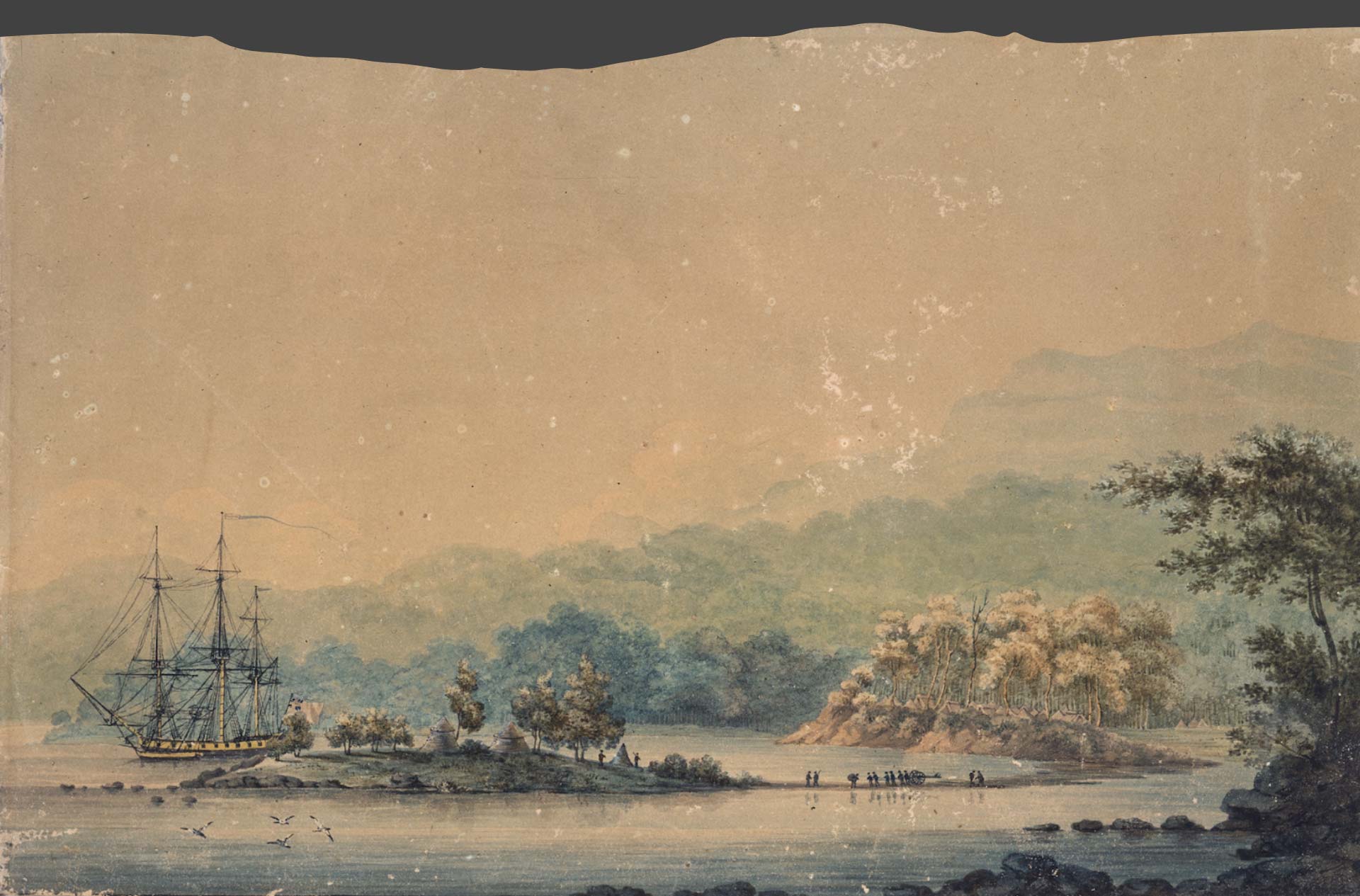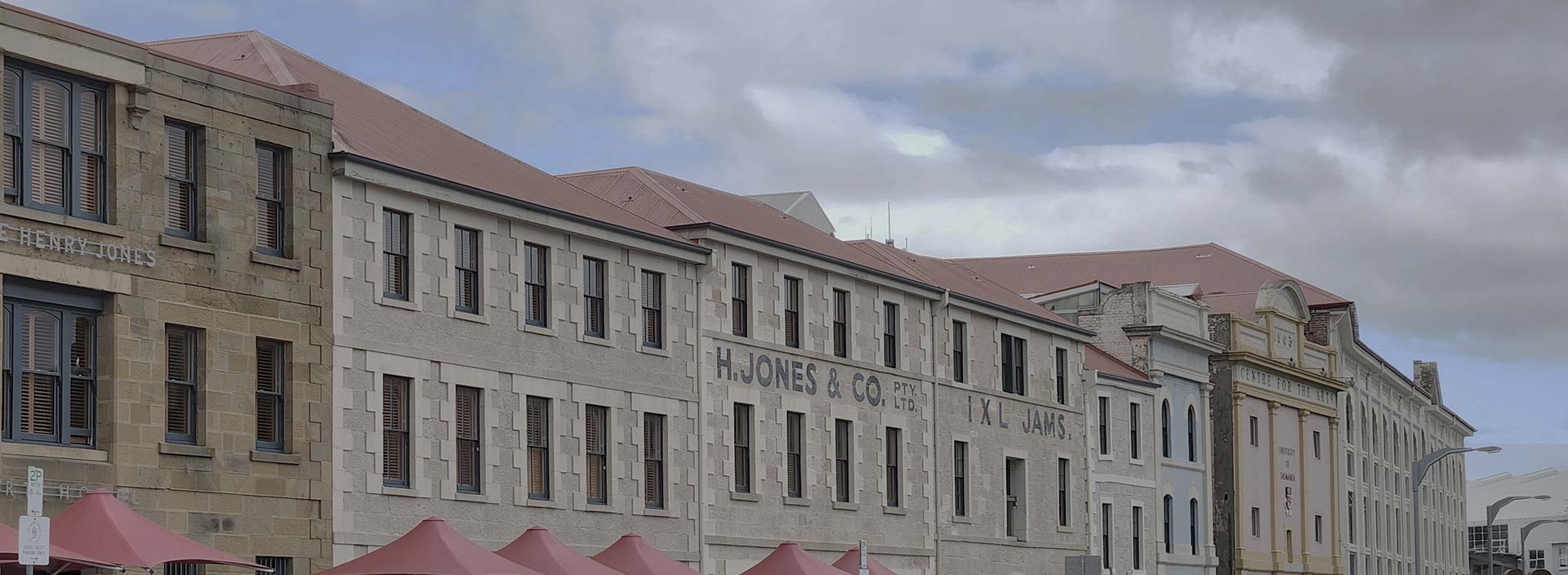
About
Imagine the waterfront of Hobart /nipaluna in 1804.
There were no big hotels, paved streets or industrial yards; no waterfront restaurants, pubs or cruise ships. Instead there was a bay surrounding a small rocky island. When the British arrived, they named it…
HUNTER ISLAND

‘View of Sullivans Cove 1804’, watercolour, possibly by George William Evans.
This image of Hunter Island captures soldiers and convicts walking along the sandbar (which became Hunter Street) to shore (now Davey and Macquarie Streets). On the island are the colony’s first bond stores, and in the foreground are ‘the rocks’ which became part of Macquarie Point.
(Image used with permission from the State Library of NSW, SV6B/Sull C/1)








